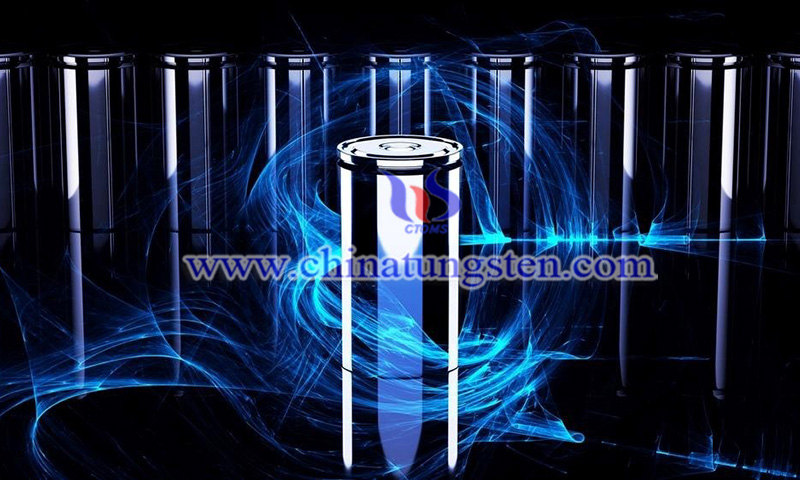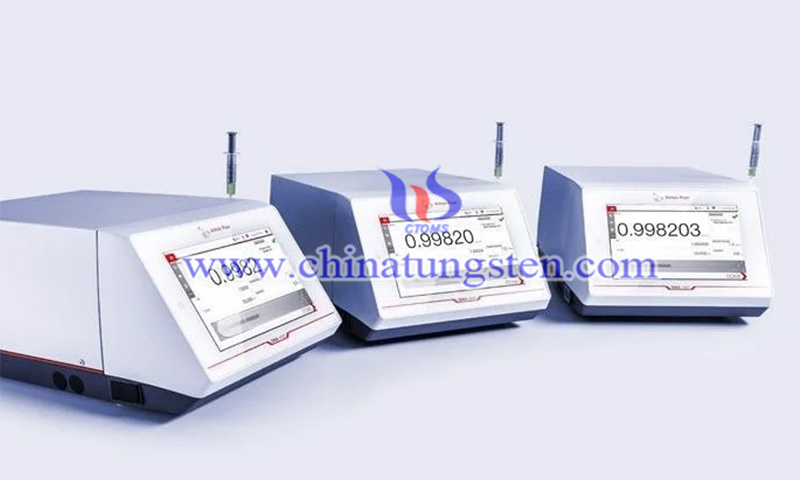Highly Dispersed MoS2 Nanoflowers for Mg-Li Battery Created
- Details
- Category: Tungsten's News
- Published on Tuesday, 10 May 2022 12:08
Molybdenum disulfide (MoS2) holds great promise in hybrid Mg-Li battery due to its fast two-dimensional ion diffusion channels. A new work published in ACS Applied Energy Materials focuses on the development of highly distributed MoS2 nanoflowers as cathode materials for magnesium-lithium batteries to increase capacity and lifetime.
Rechargeable batteries, such as lithium-ion and magnesium-ion batteries, are critical to the efficient management of energy resources because they can store and release electricity without causing any harm to the environment.
Lithium-ion batteries (LIBs) have recently gained considerable attention due to their high weight power density, theoretical potential, and long-term cycling stability. However, LIBs are not suitable for a wide range of practical applications due to the scarcity of lithium sources and the defects of lithium dendrites formed on the anode surface.

(Credit: P5h/Shutterstock.com)
As a result, magnesium ion batteries (MIBs) have been developed due to the availability of resources and the development of dendritic-free anodes. However, a major challenge for industrial applications of MIBs is the potential for significant polarization during charge and discharge operations due to the slow diffusion kinetics of these cells.
Researchers have developed MLIBs with a hybrid salt electrolyte to solve the problem of simple Mg-Li battery. The hybrid battery system consists of magnesium as the anode, a mixed Mg2+/Li+ salt as the electrolyte, and an interlayer material as the cathode. This not only takes full advantage of the dendrimer-free Mg anode, but also realizes the fast kinetic reaction of Li+ in the cathode material.
Currently, most of the MLIBs that have been developed are Daniell-type cells, in which the absorption of lithium salts in solution greatly limits the energy density of MLIBs. If the cathode material can store both Li+ and Mg2+, MLIBs will eliminate the problem of Daniell-type cells while maintaining high energy densities.
Molybdenum disulfide (MoS2), a traditional representative of transition metal disulfides, has recently gained considerable interest as a cathode material for MLIBs. Although bulky MoS2 is incompatible with Mg2+ intercalation, dispersed MoS2 is more favorable for Mg2+ diffusion and retention.

Traditionally, various techniques have been used to synthesize dispersed MoS2, including mechanical exfoliation, electrolytic exfoliation, and liquid exfoliation. However, these techniques are often difficult or time and energy-consuming at their synthesis stage. Therefore, the development of a simple process to produce highly dispersed MoS2 nanoparticles is essential for industrial applications.
In this study, MoS2 nanoflowers with different degrees of dispersion were fabricated by using hydrochloric acid to adjust the concentration of sulfur ions in the solution.
MoS2 has distinct morphological characteristics with a large BET area and wide lattice spacing, enabling it to show large capacity, excellent rate efficiency, and stable cycling performance as a cathode material for hybrid MLIBs.
The decentralized structure and enhanced lattice spacing facilitate complete contact between the electrolyte and the material and minimize the length of the ion diffusion route inside the electrode, thus promoting ion diffusion and increasing the reaction rate. The unique structure of MoS2 enables a high reversible capacity of 192.8 mAh g-1 in 100 cycles.
In this work, the researchers successfully fabricated highly distributed MoS2 nanoflowers by using hydrochloric acid to control the number of sulfur ions in the solution. The current study not only provides a viable cathode material for Mg-Li battery but also highlights a way to fabricate highly dispersed MoS2 nanofluids for other industrial applications.
The study titled “Hydrochloric Acid-Assisted Synthesis of Highly Dispersed MoS2 Nanoflowers as the Cathode Material for Mg-Li Batteries” has been published in ACS Applied Energy Materials (2022). The study was carried out by Xiong, Z. et al.
| Molybdenum Supplier: Chinatungsten Online www.molybdenum.com.cn | Tel.: 86 592 5129696; Fax: 86 592 5129797;Email:sales@chinatungsten.com |
| Tungsten News & Prices, 3G Version: http://3g.chinatungsten.com | Molybdenum News & Molybdenum Price: http://news.molybdenum.com.cn |



 sales@chinatungsten.com
sales@chinatungsten.com